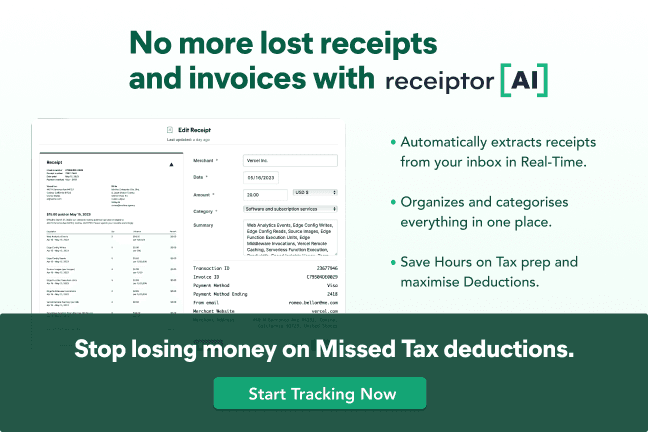Essential Updates for 2024-25
Before diving into the details, here are the critical changes affecting self-employed individuals for the upcoming tax season:
- New Social Security wage base: $168,600 for 2024
- Standard mileage rate adjustment: 67 cents per mile
- Digital payment reporting threshold: $5,000
- Enhanced business meal deduction changes
- Updated quarterly payment deadlines
What is Self Employment?
Self-employment is a work status where an individual operates their own business or profession, earning income independently rather than being employed by an organization. Self-employed individuals manage their businesses, handle all risks, and make key decisions that impact their success or failure.
Examples of self-employment include freelance writers, consultants, graphic designers, artists, photographers, and small business owners like shop owners or online sellers. Other examples are independent contractors, real estate agents, and personal trainers.
What is Self Employment Tax?
Self-employment tax encompasses the combined Social Security and Medicare contributions that self-employed individuals must remit to the Internal Revenue Service (IRS). While traditional employees share these tax obligations with their employers, self-employed individuals are responsible for the full 15.3% tax rate.
Do I Have to Pay Self-Employment Tax?
Self-employment tax applies to anyone earning $400 or more from self-employment activities, including:
- Freelancers and independent contractors
- Small business owners
- Gig economy workers
- Partnership members
- Sole proprietors
Even individuals receiving Social Security benefits must pay self-employment tax on qualifying earnings. Learn more about specific qualifications in our comprehensive self-employment guide.
Current Self-Employment Tax Rates and Thresholds
For the 2024 tax year, the self-employment tax rate remains at 15.3%, comprising:
Social Security contribution: 12.4% (applicable to the first $168,600 of earnings).
Medicare contribution: 2.9% (no income limitation)
Social Security Wage Base for 2024
Important note: The Social Security portion only applies to the first $168,600 of earned income for 2024. For earnings beyond this threshold, only the Medicare portion applies.
Additional Medicare Tax Thresholds
High-income earners face an additional 0.9% Medicare tax above these thresholds:
- Married filing jointly: $250,000
- Married filing separately: $125,000
- Individual filers: $200,000
If this applies to you, keeping track of your income and tax responsibilities is even more important.
Calculating Self-Employment Tax
The calculation process involves determining your net earnings and applying the appropriate tax rates. For precise calculations, follow these steps:
How to Calculate Self-Employment Tax
- Determine Your Net Earnings: Calculate net earnings by subtracting business expenses from your total self-employment income. You’ll report this on IRS Schedule C, part of your federal income tax return.
- Multiply by the Tax Rate: Apply the self-employment tax rate (15.3%) to your taxable income. For instance, if your net income is $100,000, you would multiply that amount by 92.35% to adjust for the "employer" half of FICA, then apply the 15.3% tax rate.
How Receiptor AI can Help


Maintaining accurate financial records is essential for maximizing tax benefits while ensuring compliance. Implementing digital accounting systems and professional tax services can significantly enhance tax management efficiency.
Our tool automatically extracts, categorizes, and organizes your receipts and invoices, ensuring that every business expense is accounted for and easy to access when tax season rolls around. By maintaining precise records, Receiptor AI helps you calculate net earnings with confidence and minimizes the risk of missing deductions.
Save time, reduce stress, and stay compliant with Receiptor AI, allowing you to focus more on growing your business.
Read also: How GenAI and Mobile Technology will reimagine accounting
Tax deadlines 2024
Self-employed individuals must implement proactive tax management strategies through quarterly estimated payments.
The Internal Revenue Service establishes specific tax deadlines for these payments:
April 15: First quarter
June 15: Second quarter
September 15: Third quarter
January 15: Fourth quarter (following year)
Essential Tax Documentation Requirements
Proper documentation requires several key IRS forms:
Schedule SE (Form 1040): Required for Social Security benefit calculation
Schedule C (Form 1040): Business income and loss reporting
Form 8959: Additional Medicare Tax determination Form
1040-ES: Quarterly estimated payment documentation
Maximizing Available Tax Deductions
Self-employed individuals can significantly reduce their tax burden by using legitimate business deductions. Key deductible categories include:
Home Office Expenses
Qualified business owners may deduct proportional costs for dedicated home office space, including utilities, insurance, and mortgage interest.
Professional Equipment and Resources
Following IRS guidelines, business-related technology, furniture, and equipment qualify for depreciation deductions.
Healthcare Premium Deductions
Self-employed individuals may deduct health insurance premiums, including dental and long-term care insurance coverage.
Retirement Planning
Contributions to qualified retirement accounts, such as SEP IRAs or Solo 401(k) plans, provide dual benefits of tax reduction and retirement security.
Conclusion
Effective management of self-employment tax obligations requires comprehensive understanding and strategic planning. Self-employed individuals should consider consulting with qualified tax professionals to optimize their tax position while fully complying with current regulations.
For additional guidance regarding self-employment tax obligations, consult the Internal Revenue Service website or seek professional tax advisory services.
